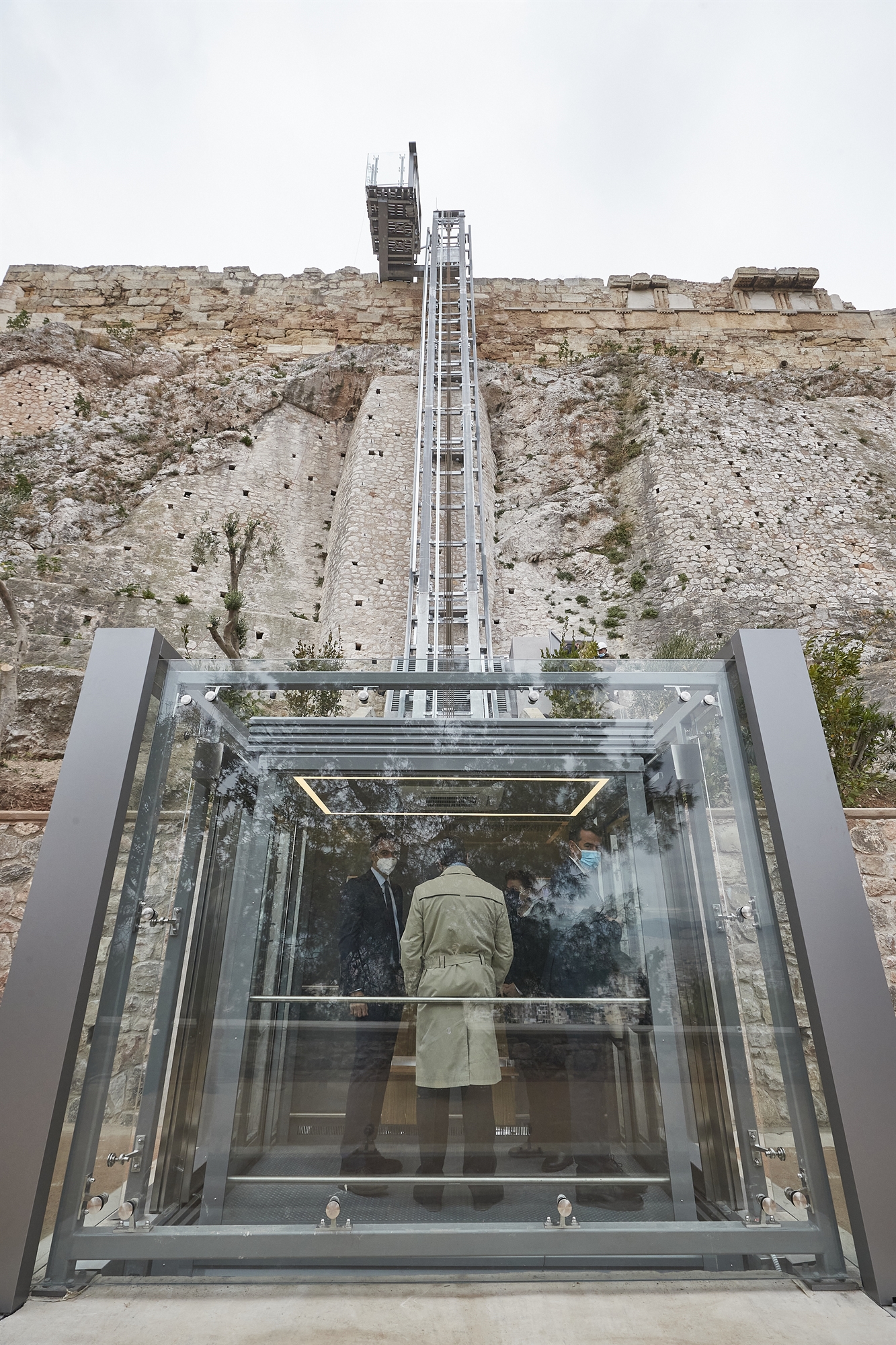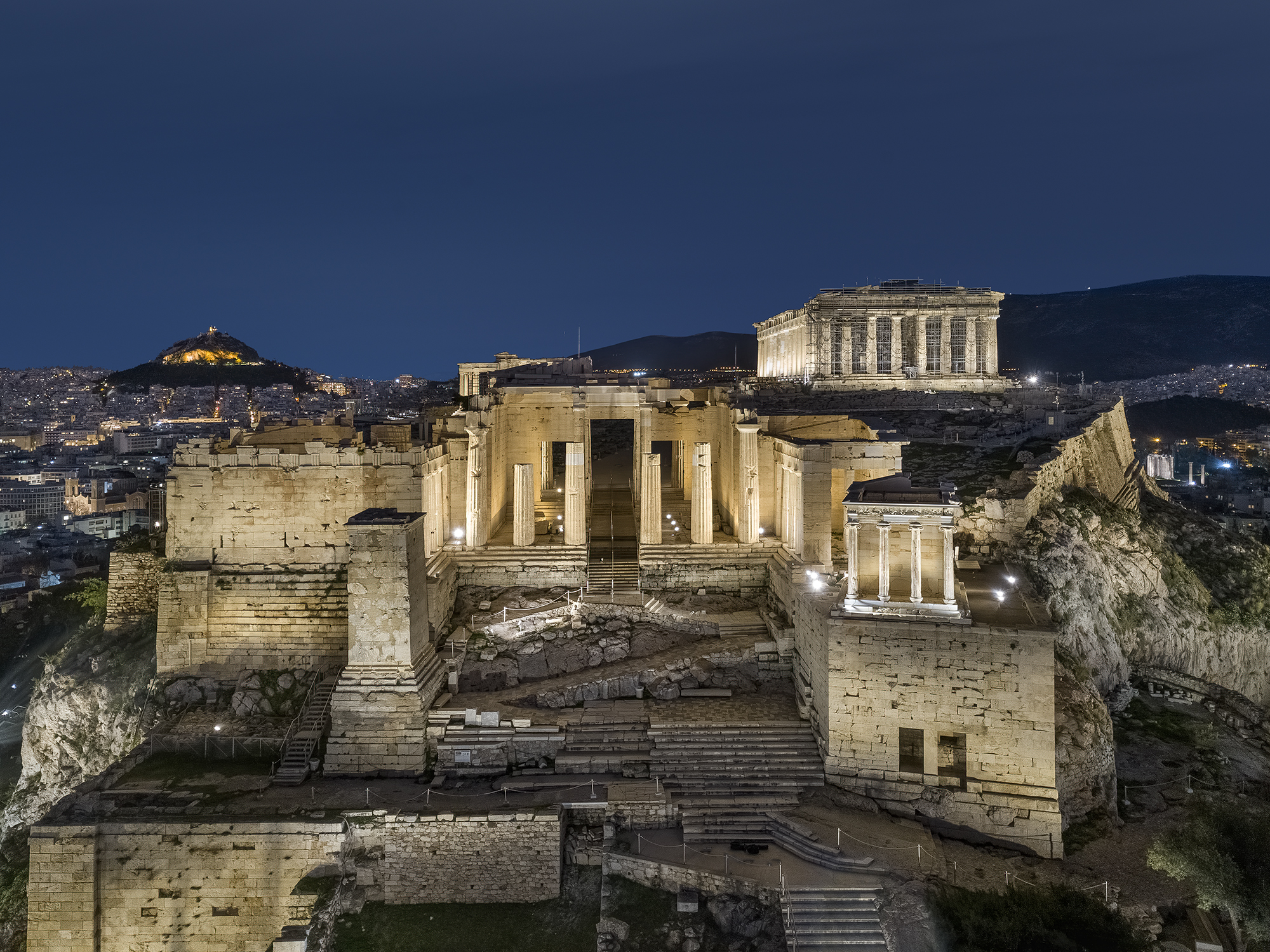
‘Excellent’ and ‘very well protected’ describes overall condition and ‘Outstanding Universal Value’ Acropolisin the report they made UNESCO World Heritage Center (WHC). And International Council on Monuments and Landmarks – ICOMOSafter opening, they were carried out in 2022 at the monuments of the Holy Rock.
A 70-page report published by KVN notes that since the establishment of the Committee for the Preservation of Acropolis Monuments in 1975, holy rock they are based on detailed studies, and the decision-making system of the competent services is staffed by high-level scientists who follow a complete and analytical process under the control of the state.
The special weight of the report of UNESCO and ICOMOS lies also in the fact that their representatives visited Greece at a time when public debates about interventions in the Acropolis, which were sponsored by the Onassis Foundation and included new routes for citizens with limited mobility, hill climbing and renovation of the lighting of the monument. In connection with the reactions and complaints about the “cementing” of the Acropolis, UNESCO and ICOMOS, at the invitation of the Ministry of Culture, sent a delegation of three people from 26 to 30 April 2022, which climbed the Sacred Rock, visited the surrounding archaeological sites and the Acropolis Museum and met with the relevant authorities.
According to the report, the much-discussed restoration and expansion of the routes of the Acropolis had no negative impact on the monument, although some options could have been avoided. The imprint of the inclined lift is positive, and the new lighting makes the monument more “readable” at night. The report also highlights the need for a detailed assessment of interventions and an extensive “management plan” for the Acropolis, as well as proposals for the restoration of the western entrance and future restoration work on the Sacred Rock.

NEW ROUTES
“They did not have a negative effect”
The new routes of the Acropolis for the handicapped and disabled citizens have caused numerous and heated controversies, and the relevant public debate has continued even after the implementation of the project on December 3, 2020. Unions, scientific associations and international media spoke, among other things, about the “cementing” of the monument, since concrete (with a cement content of 12%) was chosen for its routes, and the risk of flooding, lack of project approval, etc. was also indicated.
A recent report by the UNESCO World Heritage Center and the International Council on Monuments and Sites – ICOMOS notes that the restoration and expansion of the routes, which were carried out under the scientific guidance of an academician and chairman of the Committee for the Preservation of Monuments of the Acropolis Manoli Corret, did not negatively affect the “Outstanding Universal Value” of the Acropolis. As indicated – with the help of photographic material – the rock itself is protected by the concrete of the tracks, since an intermediate layer of PVC is laid at the point of contact. According to the report, this particular choice seems to make the entire project “reversible” which was questioned at the time of its presentation, while the width of the sidewalks is also characterized as “functionally useful” given the number of visitors, the use of wheelchairs by the disabled, but also the possible need to move vehicles to perform various tasks.
Of course, there is also an asterisk. The relevant conclusion of the UNESCO and ICOMOS report is that “the appearance (texture, color) of the paving material and the width of the paths could have been designed to better adapt to the environment of the Acropolis”, while this also applies to the drainage system. which was installed in February last year.
The report also highlights the need to assess the heritage impact of recent interventions on the monument. As stated, the evaluation is expected from December 2021, while the desire of UNESCO and ICOMOS to study it in order to provide more advisory comments is also expressed.
The usefulness of the Acropolis tourism management plan is also highlighted. This should, among other things, take into account the increased tourist flows to the monument (which, for example, can be better distributed during the day or temporarily directed to the monuments around the Acropolis), and also provide for the possibility of developing new services. , training employees on the digital tools that visitors will use, consultations with travel agents and other stakeholders, etc.
A broader management plan (management plan) for the entire Acropolis is also considered important in the UNESCO and ICOMOS report. In addition to tourism, the development of further infrastructure within the Acropolis and the area around it (for example, parking spaces), the maintenance and restoration needs of the monument itself, etc. will be taken into account. entrance to the Acropolis, for which it is necessary to take into account the increased tourist flows and preserve the historical stratification. A specific part of the Acropolis is highlighted by a monument.
SIDE LIFT
“Much easier access”

It replaced an old construction lift providing access to the monument for the disabled (but it was irretrievably damaged at some point and was delayed in repair), it was criticized as a “light saber on the Holy Rock” (while it was temporarily illuminated for night service) also sparked controversy as to whether it would eventually be accompanied by a plaque showing the sponsorship of the Onassis Foundation and the tenure of Minister of Culture Linas Mendonis.
But it seems that the new Acropolis slope lift, also made available to the public on December 3, 2020, is, according to the UNESCO and ICOMOS report, also a “reversible” project, the position of which is “sufficiently justified”. Its negative impact on the “outstanding universal value” of the Acropolis was not found and, in any case, as we read in the report’s conclusions, “the need for comfortable access for everyone when it comes to a World Heritage Site is undeniable.” . The new elevator makes life much easier for people in wheelchairs, as well as for the elderly, pregnant women and small children in wheelchairs.”
NEW LIGHTING
“Easy to read” and “eloquent” monument

Was it obviously whiter than the previous one, “yellow” and “warm”, and therefore colder, but also too technocratic and ambitious? Or was he emphasizing the full depth and dimensions of an archaeological ensemble, parts of which were finally clearly distinguishable and with less environmental impact? Of course, the new illumination of the Acropolis designed by Eleftheria Deco was another change with a new approach that was also discussed, commented and criticized when it was presented at the end of September 2020. However, according to UNESCO and the ICOMOS report, the new illumination of the Acropolis also does not have a negative effect, it makes the monument more “eloquent”, more “readable” at night, which is achieved, among other things, due to its visual division into three levels. : on the rock, on the walls and in architectural monuments. The report adds that old, energy-hungry light bulbs have been replaced with new LED technology.
The report succinctly characterizes the project as a “success”, which also does not have a negative impact on the universal value of the monument and is “reversible”. The equipment is placed so carefully that the balls themselves are not exposed to the slightest risk of wear. “However,” the report concludes, “during the day, the arrangement of lighting equipment on the Acropolis site is a series of metal boxes for lamps and cables. The design of lighting installations must be integrated into the architecture and landscape so that it becomes more expressive during the day.”
Source: Kathimerini
Ashley Bailey is a talented author and journalist known for her writing on trending topics. Currently working at 247 news reel, she brings readers fresh perspectives on current issues. With her well-researched and thought-provoking articles, she captures the zeitgeist and stays ahead of the latest trends. Ashley’s writing is a must-read for anyone interested in staying up-to-date with the latest developments.